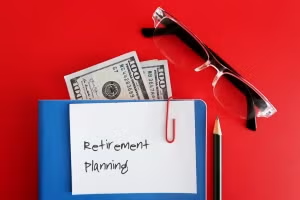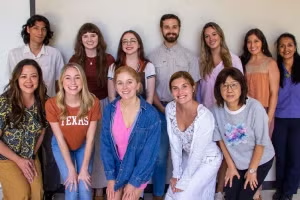Victorian photography drawn from the Harry Ransom Humanities Research Center’s collection is the focus of “Dress Up: Portrait and Performance in Victorian Photography,” an exhibition exploring Victorian culture through the period’s fascination with the new medium of photography, particularly the photographing of people.
The exhibition runs through Dec. 30 at the Ransom Center Galleries.
“We tried to showcase our theme with photography from the 19th century,” said David Coleman, curator of photography at the Ransom Center. “Photography is a wonderful way to explore this period because the Victorians were concerned about blending truth and fiction. They were really interested in understanding people through their appearance.”
Portrait and genre photography of the Victorian period reveal vivid artifice and unconcealed theatricality. While this practice was more common for images made for private use, many commercial and other publicly minded photographers also adopted aspects of performance into their work.
“The portrait industry was a money-making business,” Coleman said. “It was very much about what would sell. Portrait photographers wanted photography to be as accurate as possible and with very little creativity, so as to capture the essence of the individual.”
Most Victorian photography employed the use of backdrops, costumes and props to capture or embody a subject’s personality or to redefine the subject in a new role, be it literary, artistic or purely imaginary.
“These are seven images of the same girl by Lewis Carroll, a writer who was also an accomplished and well known amateur photographer,” Coleman said. “One of his favorite subjects was Xie Kitchin, the daughter of his colleague at Oxford. Carroll shows her dressed up as herself and other characters.”
The concept of Victorian photography suggests that people made use of portrait photography to escape the conservative society of the Victorian era.
“The Victorians got around the tight social codes of dressing appearance through dressing up, which is something we think of today as child’s play,” Coleman said.
In true Victorian fashion, all the subjects are “playing” roles, with many images occupying a middle ground between theatricality and identity.
“Tableau Vivant, which was a type of amateur performance,” Coleman said, “is also a type of photography where adults would dress up in costume, make sets and hold a pose to form a scene from history, literature, allegory or other paintings.”
This type of performance was done by people from all works of life, from lower middle class all the way to upper class. Tableau Vivant, in this instance, was an album done by the royal family, at the house were Queen Victoria spent a lot of her time.
Most Victorian photography took place in highly controlled settings such as the photographer’s studio. In the reenactment of King Arthur, Julia Margaret Cameron uses a cloth as water and scratches a crescent moon on the negative to illustrate the images from the actual photograph.
“Julia uses her chicken coop as a photographic studio,” Coleman said. “She is upfront about her process because she knew that the people who would see it would understand that it was all done from her imagination. These photographs speak volumes about the Victorian period. Yet they also possess an immediate appeal to today’s audience.”
“Dress Up” can be seen at the Ransom Center Galleries Tuesday through Friday from 10 a.m. to 5 p.m. with extended Thursday hours until 7 p.m. On Saturdays and Sundays the galleries are open from noon to 5 p.m. Visitors can take their own portrait in the exhibition’s photographic studio, complete with a scenic backdrop.



